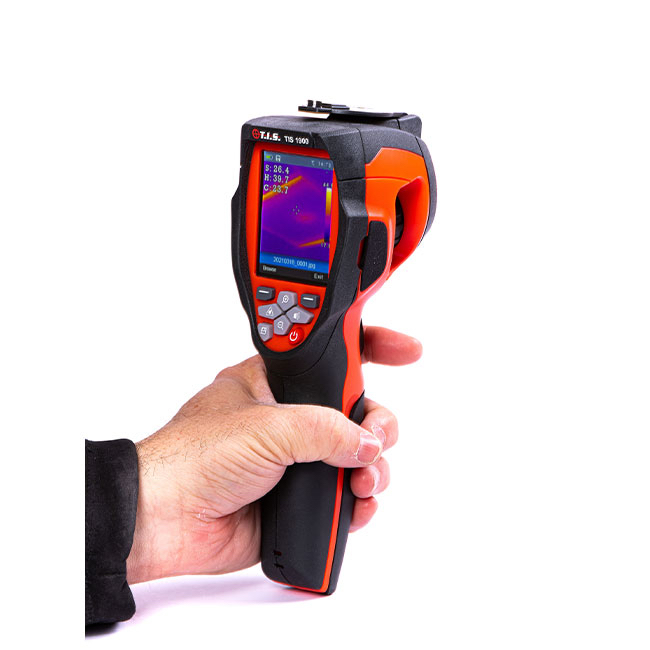Thermal Imaging cameras and Infrared cameras share very similar technologies, and to many people will appear to be much the same thing, indeed, they both detect and measure thermal energy using infrared radiation. But there are key differences in how the technology is interpreted and hence, what application you would use each one for.
Infrared radiation is emitted from any object with a temperature above absolute zero, and this can be detected by both a thermal imaging camera and an infrared camera, and here we will illustrate the differences between them.
What is a thermal imaging camera?
A thermal imaging camera is a handheld instrument used to detect changes in temperature. A lens in the camera focuses on the infrared radiation being emitted by an object or area and converts this into an electrical signal. This signal is then processed to create an image which illustrates the temperature distribution on an LCD screen, using the colours of the electromagnetic spectrum. This image can be relayed in real-time and hence changes in colour as the temperature changes. A thermal imaging camera is used in applications such as building inspections and electrical testing and maintenance, to detect hot spots and hence potential safety problems. It is considered to be a safe and practical way to assist in electrical testing surveys because it is passive, non-contact and non-destructive in the way it tests.
What is an infrared camera?
Infrared cameras use the portion of the electromagnetic spectrum between visible light and radio waves and hence only measure temperature directly, rather than changes in temperature. However, the main similarity people note between thermal imaging and infrared cameras is in their night vision capabilities, and this is where most confusion arises. Infrared night vision merely amplifies the available light in a certain environment and uses it to produce a visible image. Infrared cameras are used to take temperatures at specific points and to view images where there is no natural light, and are used in applications such as medical imaging, food processing and scientific research.
How are thermal imaging cameras and infrared cameras different?
Thermal imaging cameras – such as the TIS1900 thermal imaging camera supplied by Test Instrument Solutions – use mid to long wavelengths of infrared energy to sense the differences in heat in an object or area, and these heat signatures are displayed on an LCD monitor. Thermal imaging cameras do not see reflected light, they use infrared radiation to detect heat signatures and how they change, from a distance.
On the other hand, infrared cameras use short wavelength infrared light to illuminate areas of interest and make them visible when they otherwise wouldn’t be. Infrared energy is reflected back to the camera to generate a visible image, which is how it is useful in medical applications.
So in summary, the important difference between thermal imaging cameras and infrared cameras, is that thermal imaging cameras use infrared technology to detect and illustrate temperature changes, heat distribution and the temperature gradients of an object or area. Alternatively, infrared cameras detect and capture infrared radiation to make a direct temperature reading and to produce a moving image without the need for any natural light.
Video Demonstration
Below is a product demonstration of the TIS 1900 (thermal imaging camera):
Please note that this section is for information purposes only. Anyone using equipment referred to in this section must be suitably qualified and/or experienced within the respective field. If in doubt before use, please consult a qualified electrician or engineer & thoroughly read all instruction booklets.